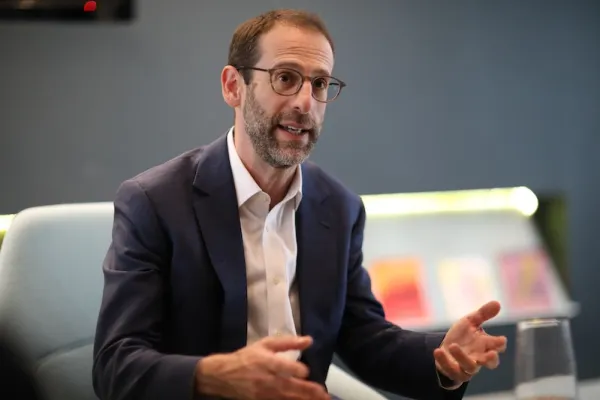Financial industry executives generally got the messages of Fooled by Randomness and The Black Swan, the books published in 2001 and 2007, respectively, that brought Nassim Nicholas Taleb to prominence as a philosopher of markets, volatility and probability. They were not easy reads, and their warnings of impending doom didn’t prevent the meltdown of 2008–’09. But they were bestsellers that established Taleb, distinguished professor of risk engineering at New York University Polytechnic School of Engineering, as one of the leading public intellectuals in finance, quantitative and otherwise.
Books with such far-reaching business implications spawn others that bring theoretical concepts down to the practical level. In Stalking the Black Swan (2010), longtime Morgan Stanley specialty finance analyst Kenneth Posner advises looking beyond the rare, catastrophic shocks that are the black swans of Taleb’s title: those that are not predictable through conventional extrapolation of historical data but need to be factored in if future crises are to be avoided. Posner calls investors’ attention to “plenty of smaller, more mundane swans, whipsawing individual stocks and sectors even when the rest of the market is calm” — and the risks and opportunities they present.
Taleb is barely mentioned in The Dao of Capital (2013), a memoir and free-market manifesto by Mark Spitznagel, but the book’s lineage is clear: Taleb advises Spitznagel’s Miami-based Universa Investments in the latest stage of a 15-year relationship between two former pit traders.
Public reaction was less enthusiastic to Taleb’s 2012 Antifragile: Things That Gain from Disorder. (The U.K. edition had a different subtitle: How to Live in a World We Don’t Understand.) The volume is dense, and the follow-on literature sparse. Taleb’s “voluminous and very significant work on uncertainty” has “wonderful far-reaching consequences — albeit less straightforward, I believe, for capital investment,” Spitznagel wrote in The Dao of Capital.
Antifragile is high-concept, to be sure. Taleb is not merely saying that systems and organizations need to be better able to withstand inevitable shocks and crises. He believes antifragility is a built-in trait or characteristic of systems that adapt and strengthen through adversity. Antifragile systems “benefit from volatility,” the scholar has said. When stressed, the antifragile becomes more resilient, whereas the fragile bends and breaks.
It did not help Taleb’s cause that there were few, if any, practical and independent interpretations of antifragility. It seems applicable to any number of systemic challenges. In a July 13, 2009, Financial Times commentary co-authored with Spitznagel, Taleb said that “debt and leverage cause fragility” in the economic system as a whole. “The only solution is to transform debt into equity across all sectors, in an organized and systemic way” — to introduce antifragility, as Taleb would argue over time.
Perhaps improbably, and with no encouragement from Taleb, a U.K.-based consultant is championing antifragility. Presenting it as a potentially grand unification of management and systems theory, Tony Bendell, founder of Services Ltd. and retired Rolls-Royce–funded professor of quality and reliability management at the University of Leicester, published Building Anti-Fragile Organisations: Risk, Opportunity and Governance in a Turbulent World earlier this summer. His seven-month-old Anti-Fragility Academy offers educational programs.
Bendell’s opinion of Taleb’s book won’t make it as a cover blurb: “Seminal, but desperately difficult to read and not user-friendly,” he tells Institutional Investor. But that didn’t obscure the epiphany: “The concept was about the most fundamental thing I had come across in my career.”
An expert in Six Sigma and other performance-enhancement methodologies, Bendell has spent most of his career focusing on how to improve organizations. Taleb, he explains, did not directly address the fact that “we have a very patchy methodology in the quality improvement/quality excellence movement. It’s a mixture of strategy and risk and operations that is not coherent. The antifragility concepts brought a coherence or unification that I hadn’t thought about before. I had to start thinking about hierarchies of risk in a way that I hadn’t thought about before.”
Bendell believes he and others have only scratched the surface of antifragility and how to implement it, but there is no shortage of need for it. “Most of our global systems, the way they have been put together, are potentially very fragile,” he says. “The way our financial system operates is fundamentally fragile. Decision-making processes are quite fragile.”
His book proposes approaches in such areas as corporate culture, operations management and supply chains. Bendell says he may deal with more macro issues, like financial regulation, in his next book.
He invited a banker, State Bank of India’s U.K. regional head Mrutyunjay Mahapatra, to touch on that in a foreword: “Capital as the omnibus prescription of anti-fragility is either untenable or unsustainable because of its limited supply or because no one knows how much is enough. In such a circumstance, an investment in knowing about anti-fragility is probably the best bet.”






